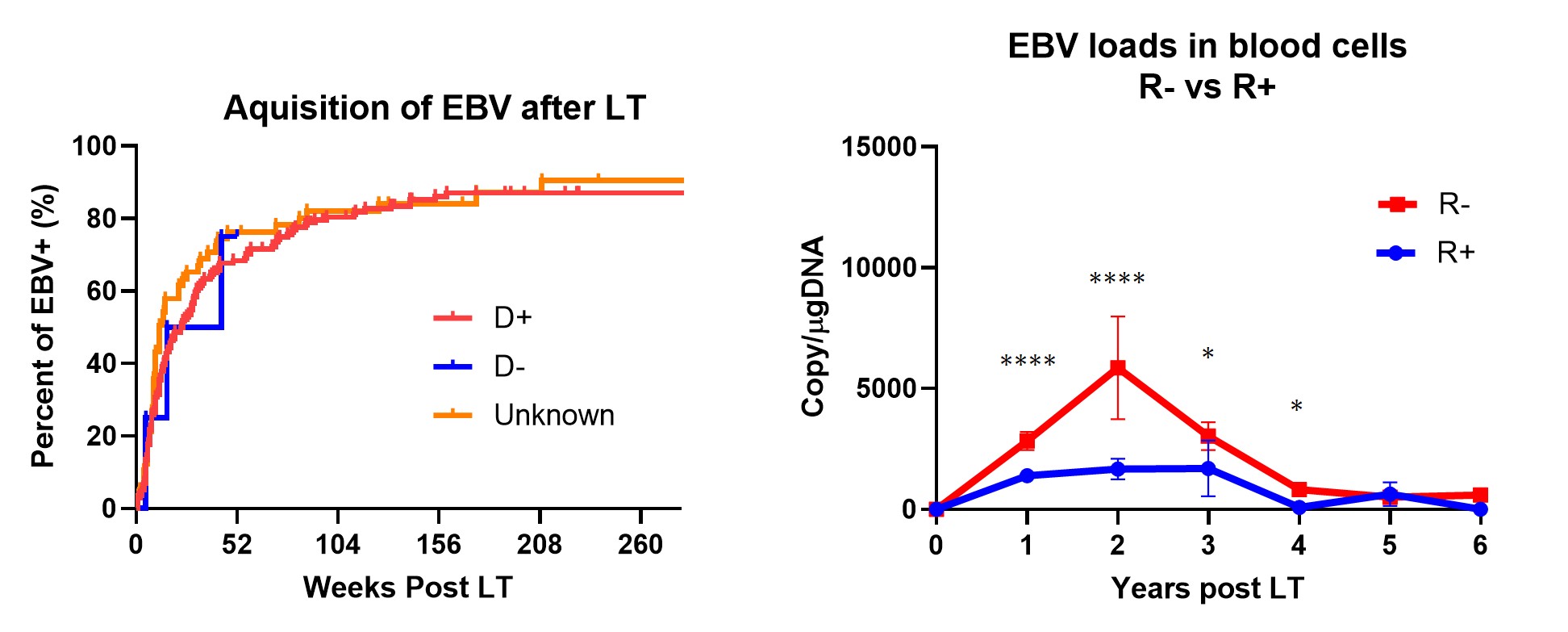Epidemiology of EBV Infection and EBV Load Kinetics after Pediatric Living Donor Liver Transplantation
M. Yamada, A. Fukuda, M. Ogura, S. Shimizu, Y. Ishikawa, F. Kawano, H. Uchida, M. Takeda, Y. Yanagi, S. Sakamoto, M. Kasahara, K. Imadome
National Center for Child Health and Development, Tokyo, Japan
Meeting: 2020 American Transplant Congress
Abstract number: D-185
Keywords: Epstein-Barr virus (EBV), Liver transplantation, Pediatric
Session Information
Session Name: Poster Session D: PTLD/Malignancies: All Topics
Session Type: Poster Session
Date: Saturday, May 30, 2020
Session Time: 3:15pm-4:00pm
 Presentation Time: 3:30pm-4:00pm
Presentation Time: 3:30pm-4:00pm
Location: Virtual
*Purpose: Epstein-Barr virus (EBV) is a ubiquitous virus that infects more than 90% of adult population worldwide. EBV infection after pediatric liver transplantation (LT) accounts for significant morbidity and mortality because of its carcinogenesis, resulting in EBV-associated post-transplant lymphoproliferative disorders (PTLD). The polymerase chain reaction (PCR) for EBV has been implemented to monitor the acquisition and the activity of EBV as well as the proliferation of EBV-infected cells to prevent the development of PTLD. However, most currently available data is generated from deceased donor LT. In Japan, the majority of LT is performed from living donors, and the detailed epidemiologic data of EBV infections and their outcomes is lacking. Hence, the purpose of this study is to describe the epidemiology EBV infection after living donor LT and reveal the kinetics of EBV loads by using a longitudinal data set of EBV PCR monitoring.
*Methods: We retrospectively reviewed clinical and laboratory data from 520 patients who underwent isolated LT between 2006/1/1 and 2018/12/31 at the tertiary children’s hospital in Japan. Further analysis was performed amongst 386 children who were <18 years of age at the time of LT and had at least five times EBV load measurement throughout the course. The frequency of EBV monitoring was determined by the clinical protocol. EBV DNA loads were reported in both copy/μgDNA in blood cells and copy/mL in plasma, as previously described. The reduction of immunosuppressants is usually attempted when the EBV loads are above either 1000 copies/μgDNA or copies/mL, respectively. P<0.05 is considered statistically significant.
*Results: A total of > 5000 data points were analyzed. 94% of the study subjects underwent living donor LT. (1) 80% of EBV naïve LT recipients (R-) acquired primary EBV infection within two years post LT. (2) The maximum EBV loads of R- were higher than in EBV seropositive recipients (R+) in both blood cells and plasma. (3) EBV loads of R- in blood cells were higher in the first four years post LT. There were no PTLD patients in our cohort.
*Conclusions: The majority of our cohort underwent living donor LT. Although EBV acquisition frequently occurred early after LT, PTLD rate was low. After four-years post LT, the EBV loads of R- were similar to that of R+. Our results indicate that the duration of EBV monitoring for five years may be sufficient after pediatric living donor LT to prevent sequelae of EBV infection.
To cite this abstract in AMA style:
Yamada M, Fukuda A, Ogura M, Shimizu S, Ishikawa Y, Kawano F, Uchida H, Takeda M, Yanagi Y, Sakamoto S, Kasahara M, Imadome K. Epidemiology of EBV Infection and EBV Load Kinetics after Pediatric Living Donor Liver Transplantation [abstract]. Am J Transplant. 2020; 20 (suppl 3). https://atcmeetingabstracts.com/abstract/epidemiology-of-ebv-infection-and-ebv-load-kinetics-after-pediatric-living-donor-liver-transplantation/. Accessed July 2, 2025.« Back to 2020 American Transplant Congress

